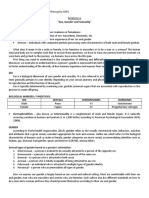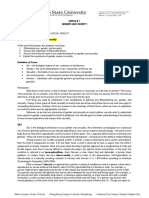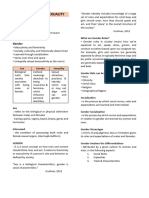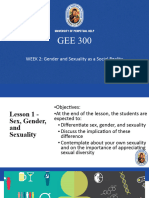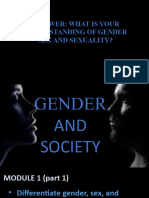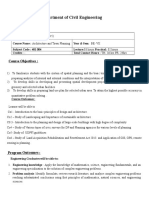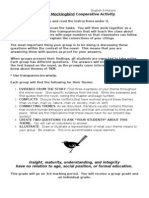GENDER AND
SOCIETY
Lesson 1: Sex, Gender, and Sexuality
�Gender and society are deeply intertwined, as
gender is a social construct shaped by the values,
norms, and institutions of a given culture rather
than being solely determined by biology. Society
defines what being male, female, or another
gender means through cultural norms, institutional
expectations, and social interactions. These
definitions are taught and reinforced through early
socialization—from family, school, and media—
and continue to influence how individuals express
their identities and behave
�What does it mean to be a
male or a female, to be
feminine or masculine, or to
be a man or a woman?
�SEX
Sex is the biological dimension of your
gender and sexuality. Also referred to as
biological sex or physical sex, the term generally
pertains to your identity depending on your sexual
anatomy and physiology – the parts of your body
that are relevant to reproduction and the
function of these parts. Sex is typically
determined by examining your genitals – these
are external organs that are associated with
reproduction – the process or the ability to
create offspring.
� SEX
There are case when the baby’s genitals appear to be
a conglomerate of male and female organs such that
it may be difficult to classify the baby’s sex further
examination. In the past, this condition is referred to a
hermaphroditism(from Hermes, a male Greek god,
and Aphrodite, a female Greek goddess). In modern
times, the term intersexuality is used to refer to this
phenomenon. Hermaphroditism or intersexuality is a
naturally occurring variation in humans and animals
according to the American Psychological Association
(APA).
�� GENDER
Gender refers to the characteristics
of women, men, girls and boys that
are socially constructed. This
includes norms, behaviours and roles
associated with being a woman,
man, girl or boy, as well as
relationships with each other.
�� GENDER IDENTITY
One important aspect of our gender is our
sense of who we are. Do we see and
experience ourselves as a man, a woman,
or neither. This refers to our gender identity.
Typically, males are comfortable
identifying as a man and females are
comfortable identifying as a woman.
� GENDER IDENTITY
However, there are cases wherein a person's
biological sex does not align with one's
gender identity. People with this experience
are referred to as transgenders.
Transgender woman- male who is not
comfortable identifying as a man.
Transgender man- female who is not
comfortable identifying as woman.
� SEXUAL ORIENTATION
Sexual Orientation is a person’s emotional,
romantic, or sexual attraction to others.
Someone may be attracted to people of the
opposite sex (heterosexual), the same sex
(homosexual), both (bisexual), all genders
(pansexual), or may not experience sexual
attraction at all (asexual).
It is different from sex (biological traits) and
gender identity (how someone sees themselves
as male, female, both, or neither).
� GENDER ROLE
The societal norms dictating the
types of behaviors considered
acceptable based on one’s
gender (e.g., men as
breadwinners, women as
caregivers).
� HETERONORMATIVITY
Heteronormativity is the belief,
assumption, or expectation that
heterosexuality (being attracted to the
opposite sex) is the only natural, normal,
or acceptable form of sexuality. It also
assumes that there are only two genders
(male and female) and that their roles
and relationships are fixed.



